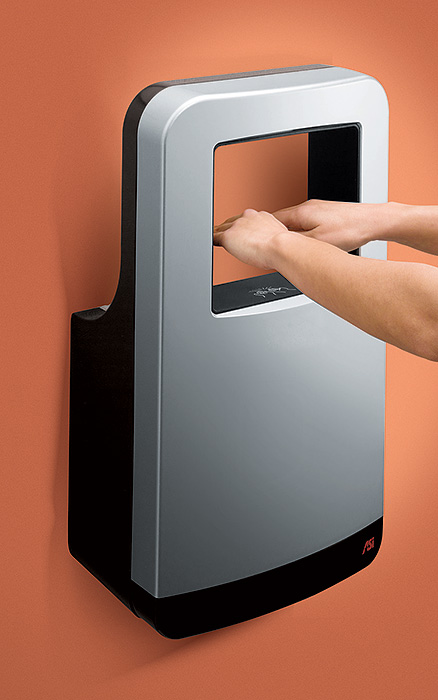Taking Sustainable Washroom Design Beyond LEED
Making Sustainable Decisions for Partition Mounted Elements
Once partition material, assembly type, and hardware are specified, design focus narrows to accessory components. These may include lockers, disposal units, purse shelves, coat hooks, soap dispensers, toilet paper dispensers, and seat cover dispensers. Accessories are a critical part of a highly functioning washroom, but often create the most maintenance issues.
For those facilities using lockers, material options include powder coated steel, solid plastic polymer (HDPE), and phenolic (black core), glass and wood as well. As in partition material type, solid plastic polymer and phenolic materials and glass offer the best choices for wet or high humidity environments. Solid plastic and phenolic also offer the greatest security level against vandalism.
Often accessory choices are left to a building manager. This can lead to mismatched selections and a disruption of aesthetics in the washroom. In the end, these post-design selections can cost more than those planned for installation at the product’s inception. By carrying design through to accessories, the architect ensures that choices and material selections are complimentary. Besides partition mounted accessories, there are many other washroom accessory choices that an architect should make based on energy consumption and sustainability, such as hand dryers versus paper towels, decibel level in dryers, and moisture management (some dryers resist water from falling on the floor and hence require less facility maintenance). Other factors that should be considered in accessory selection are the gauge of steel used–it can vary from 22 gauge, which is the baseline CSI spec, to 16 gauge for high use and abuse environments. Stainless Steel accessories are traditionally fabricated utilizing 304 stainless steel. This grade of stainless is the standard for the washroom industry. Some manufacturers may use a lesser grade of stainless with lower nickel and chromium levels. These lower content levels directly affect the corrosion resistance of the material and will lessen the lifecycle of any accessory that is supplied in this manner. It may be wise for designers or building owners to ask for certification of 304 stainless steel when choosing this material.
Some accessories, such as toilet paper dispensers, are especially designed for partition mounting. Mounting accessories on partitions requires that the partitions be prepared for installation. Items such as grab bars require secure anchorages on the partitions. While this may add some cost, it provides a much more secure installation. Careful selection is key. Double-sided partition accessory mounts require particular care in coordination, so as not to impinge on interior stall clearances and sustainability. This is particularly important for handicap accessible stalls.

Photo courtesy of The ASI Group
Besides partition mounted accessories, there are many other washroom accessory choices that an architect should make based on energy consumption and sustainability, such as hand dryers versus paper towels, decibel level in dryers, and moisture management.









